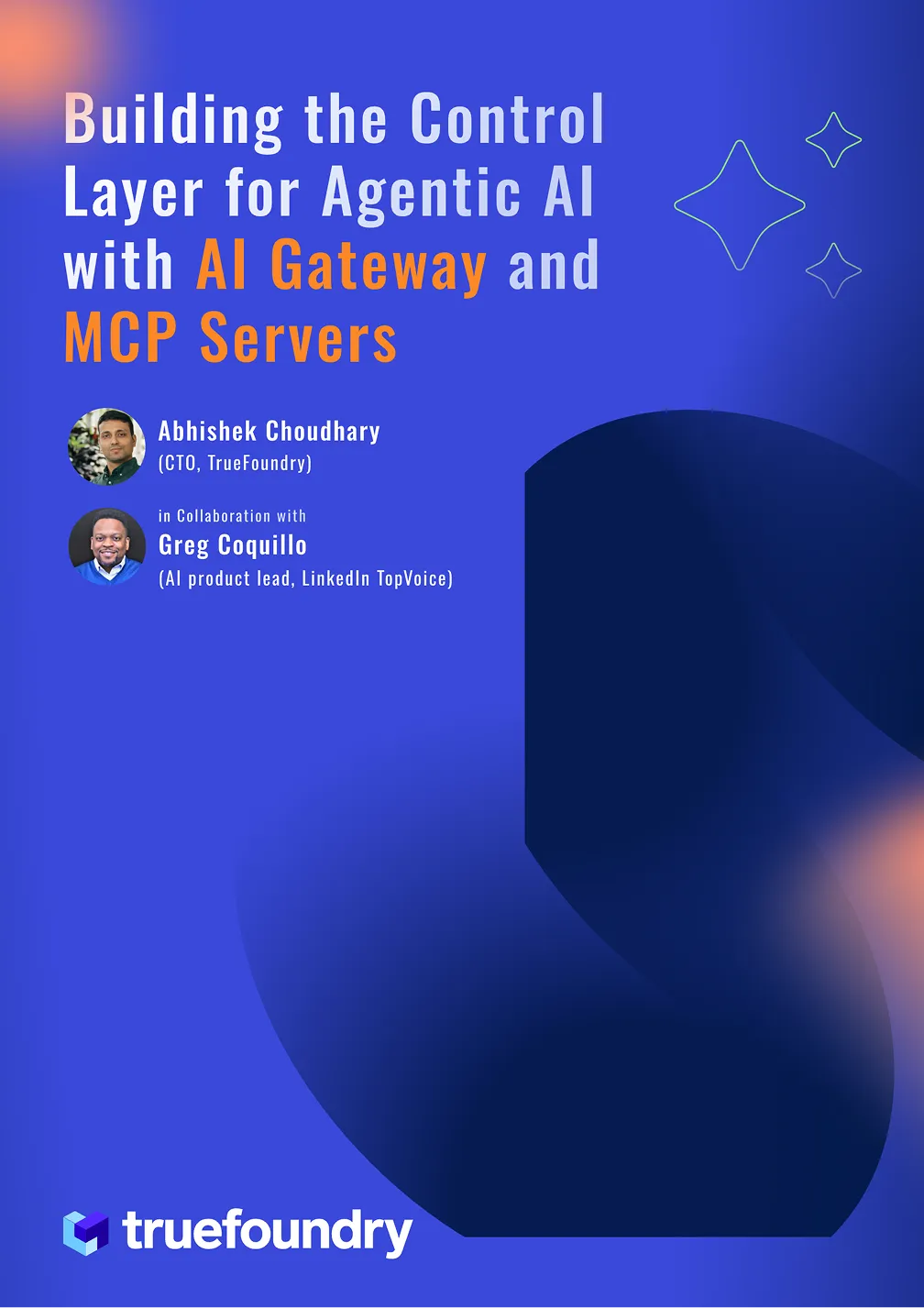Build Vs Buy
As organizations increasingly adopt generative AI applications, enterprises are faced with the critical decision of whether to build their own solutions or buy existing products. This decision is complex and influenced by various factors, including the unique needs of the organization, the evolving technology landscape, and the associated risks.
TL;DR- It’s not build vs buy in the world of Generative AI. It’s build, buy, and build some more.
How should enterprises think about the build vs buy dilemma for GenAI applications?
Below are a few key considerations to keep in mind when exploring the build vs. buy decision for Generative AI applications
Centralized Governance
- Data Risks: High risk of data exposure when using hosted or closed-source APIs.
- Access Control: Ensuring proper control over access to models,data prompts, and completions across various applications.
- Governance and Guardrails: Centralized governance is required to manage security and compliance risks, and to establish necessary guardrails.
- Audit Trails: Critical for maintaining transparency and accountability, audit trails are a must for generative AI applications.
Tailored to Specific Use Cases
- Unique Needs Across Teams: Different teams across organizations are building generative AI applications, each with its own specific requirements.
- No One-Size-Fits-All: There's no universal model that balances accuracy, latency, and cost. This is also true for GPU hardware, model servers, development frameworks, evaluation systems, and more.
- Federated Execution: Teams must have the flexibility to choose the right components for their specific needs, considering factors such as data sensitivity, application scope, model customization, risk tolerance, and scalability.
Rapidly Evolving Technology Stack
- Specialized Knowledge: The generative AI stack is evolving quickly, and no single vendor can cover all aspects of it. Expertise is needed in areas such as:some text
- Distributed GPU infrastructure for model training and hosting.
- Efficient caching of large models and Docker images, as well as handling long-running fine-tuning jobs.
- Deployment of complex, multi-component AI systems.
- Adapting to the constant changes in models, hardware, and frameworks.
- Future-Proofing: The ideal generative AI stack is still evolving, so it's critical to keep your approach adaptable to future innovations.
Vendor Lock-In
With technology changing rapidly, the risk of vendor lock-in is higher than ever, making it essential to maintain flexibility.It’s important to keep your options open and avoid being tied to a single vendor as technology continues to evolve.
Cost Optimization
- Rising Costs: Prototype costs can skyrocket when moving to production.The cost structure of large language models doesn't always align with production requirements, often leading to inefficiencies.
- Resource Optimization: It's crucial to optimize resource selection and utilization, including the right models and GPUs, to manage costs effectively.
Best SRE Practices & Rapid Prototyping
- Software Best Practices: Employ best practices like GitOps, access control, logging, monitoring, audit trails, rollbacks, autoscaling, and scaling to zero to ensure smooth operations.
- Rapid Experimentation: Innovation is closely tied to how quickly you can experiment with new models and technology stacks. Rapid prototyping is key to staying ahead.
Lessons from MLOps
Drawing from the evolution of the MLOps stack, using specialized tools tailored to different stages of the lifecycle—such as Databricks for data engineering, SageMaker for model training, and other Kubernetes based platforms for deployment—enables organizations to optimize workflows and enhance efficiency.
Instead of relying on a single platform, integrating the strengths of multiple platforms allows for better resource allocation, cost control, and scalability.
This evolving landscape is driving platform teams to adopt a hybrid approach that combines both building in-house solutions and buying third-party tools to create the ideal generative AI stack.
How TrueFoundry enables building GenAI applications

Developer-Centric Design
TrueFoundry is built with a developer-first mindset, delivering a seamless and flexible developer experience. It provides multiple ways to get started:
- Custom Code and Models: Developers can bring their own code and models, ensuring maximum flexibility and ease of setup.
- Templates and GitHub Integration: For faster deployment, developers can choose from pre-built templates or directly connect to their GitHub repositories for seamless model integration.
Core Abstractions
TrueFoundry simplifies the AI lifecycle with powerful abstractions:
- Services: Easily deploy AI models as scalable services, simplifying inference and operational tasks.
- Jobs: Manage scheduled or on-demand tasks, ideal for batch processing, training and automated workflows.
- Workflows: Build complex AI pipelines by connecting multiple tasks.
- Open-source Helm Charts: Effortlessly package and deploy AI workloads on Kubernetes using Helm charts.
Modules for Building Compound AI Systems
- Model as a Service: Deploy AI models with built-in scalability and reliability, minimizing infrastructure concerns.
- No-Code Model Fine-Tuning: Easily fine-tune pre-trained models without coding.
- Agents & RAG Framework: Build Agents & RAG applications with inbuilt frameworks to get started
- AI Gateway: Prompt Management, centralized key management, unified API for models and more for better control and security across teams.
Features for Scalability and Cost Optimization
- GPU Management: Optimize GPU usage for efficient model training and inference.
- Cost Optimization: Automatically manages resources to reduce operational expenses via spot instances, fractional GPUs, avoiding costly errors and tools for monitoring and alerting.
- Autoscaling: Dynamically scales compute resources based on workload demands to ensure optimal performance.
- Secret Management: Securely handles sensitive information, including API keys and tokens.
- CI/CD Integration: Seamlessly integrate with CI/CD pipelines to streamline model development and deployment.
- Scale to Zero: Automatically reduces resource consumption during idle periods to minimize costs.
Underlying Infrastructure
At its core, TrueFoundry is built on Kubernetes, providing high scalability, reliability, and efficient resource management.
It supports multi-cloud and on-prem workloads, offering flexibility across any environment.
When does it make sense to build inhouse?
Building in-house is a smart option when developing proprietary AI solutions that distinguish your offerings and optimize long-term costs at scale. However, it demands a substantial upfront investment in recruiting highly skilled talent and assembling a capable technical team. Additionally, there’s a significant learning curve as the team needs to design, build, and maintain complex AI infrastructure, integrate it with existing systems, and ensure scalability, security, and compliance.
In-house Platform vs TrueFoundry

How do we prevent Vendor Lockin?
TrueFoundry is designed with a core philosophy to avoid vendor lock-in, making it simple for you to transition off the platform if needed.
- We provide access to the Kubernetes manifest file, giving you complete control and visibility over your infrastructure.
- Your application code remains untouched, so migrating off doesn’t require extensive refactoring.
- Unlike cloud providers or platforms like Databricks that base pricing on usage, our seat-based pricing is focused on developer productivity, ensuring you're not penalized as you scale.
- Additionally, TrueFoundry integrates effortlessly with your existing tech stack, allowing workflows such as train on platforms like SageMaker and deploy on TrueFoundry. There's no need for a full system migration—our API-driven approach works seamlessly with what you already have.
Build 'And' Buy Approach
In the world of Generative AI, it's not simply a choice between build or buy—it's a combination of both. Organizations are adopting a hybrid approach, buying tools while building customized solutions to address their unique needs, continuously evolving and refining their AI stack to stay competitive.
This approach ensures flexibility, enabling teams to leverage the strengths of existing platforms while retaining control over critical, proprietary elements.
Built for Speed: ~10ms Latency, Even Under Load
Blazingly fast way to build, track and deploy your models!
- Handles 350+ RPS on just 1 vCPU — no tuning needed
- Production-ready with full enterprise support
TrueFoundry AI Gateway delivers ~3–4 ms latency, handles 350+ RPS on 1 vCPU, scales horizontally with ease, and is production-ready, while LiteLLM suffers from high latency, struggles beyond moderate RPS, lacks built-in scaling, and is best for light or prototype workloads.









.png)












